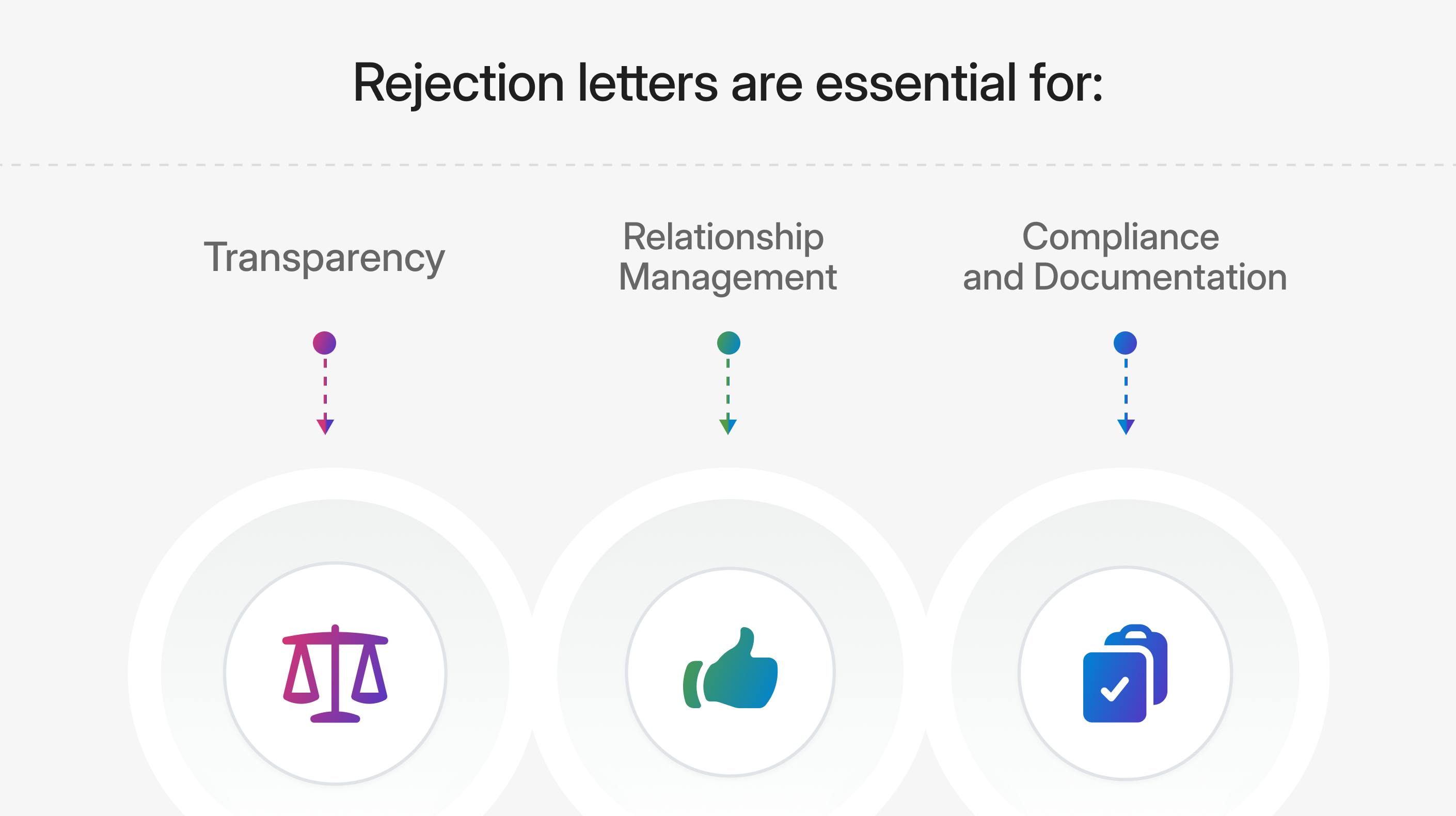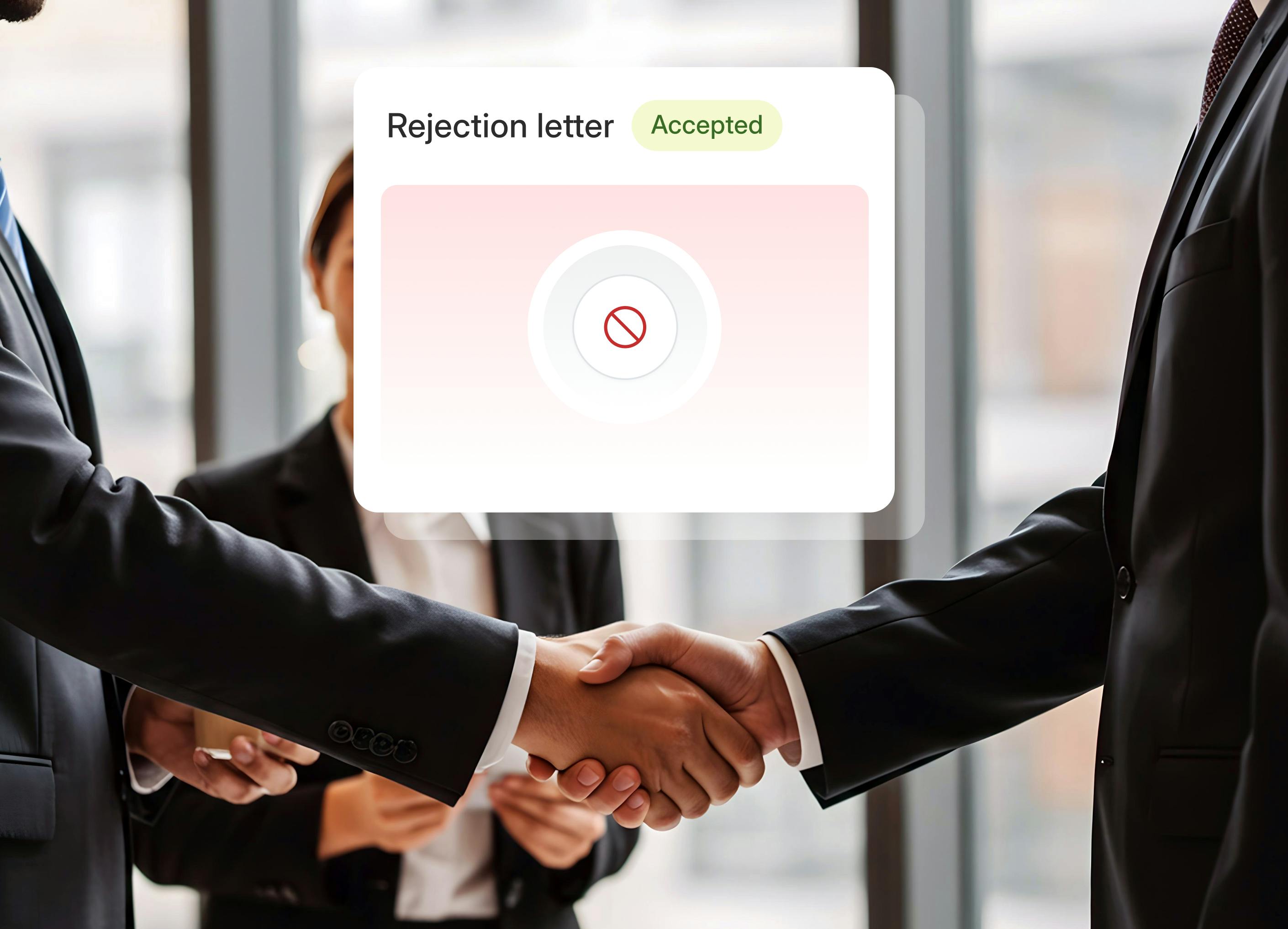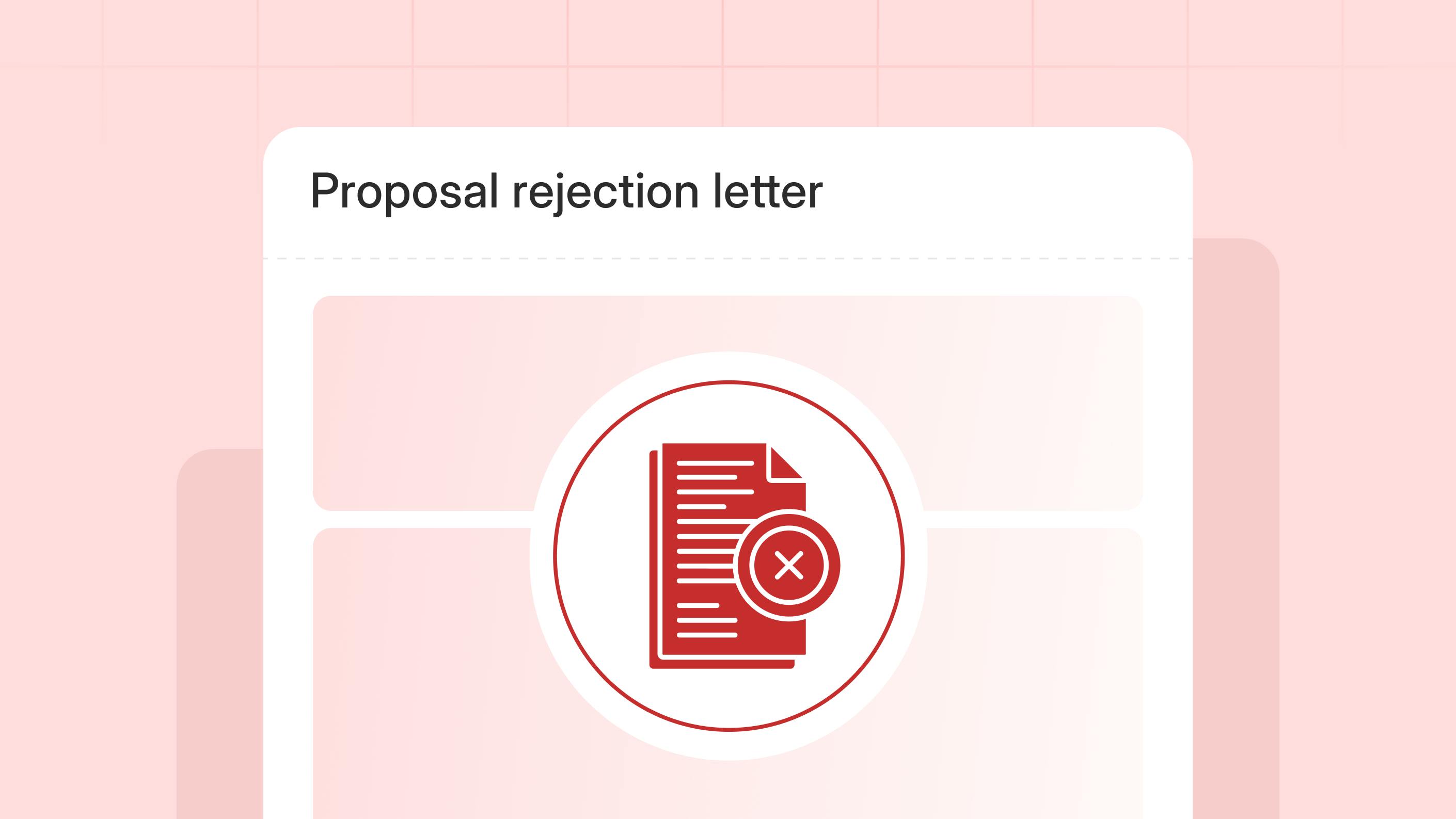Proposal rejection letters play a critical role in the procurement process. When vendors invest significant time and resources responding to your RFPs, it's essential to communicate rejection thoughtfully and professionally.
In this blog, we’ll explore the importance of these rejection letters, provide a comprehensive guide to crafting effective letters that maintain positive vendor relationships, and provide examples you can review to inspire your own letters.
What is a proposal rejection letter?
A proposal rejection letter informs a vendor that their submitted proposal will not move forward after they initially submitted their request for proposal (RFP). The rejection letter communicates the decision clearly, politely, and professionally, ensuring transparency and maintaining goodwill.
Traditionally, the notice is sent in the form of a letter; however, many choose now to send these rejection letters through email or a centralized RFP management system. The rejection notice may also be called a vendor rejection letter, bid rejection letter, unsuccessful bidder letter, or non-award notice. No matter what you call it, it’s important step in any proposal process.
Types of proposal rejection letters
- Notice of noncompliance: Used when proposals don't follow specified RFP guidelines. Clearly state the issue to help vendors improve future submissions.
- Unsuccessful bidder letter: Commonly used to notify vendors they weren't selected after the evaluation process. Typically sent via email, this letter streamlines communication.
- Award notification: Used primarily by government agencies to publicly announce the selected vendor and differentiate factors influencing the decision.
- Non-award letter: Communicates that an RFP opportunity is no longer available due to delays, suspensions, or changing priorities. Offers clarity on potential future opportunities.
Why is a proposal rejection letter important?

Each proposal you receive is the result of many hours of hard work from many people. Waiting for a final decision is hard enough. Not hearing back is even worse. Clear communication, even when you’re delivering bad news, builds and maintains relationships, an important part of supplier relationship management.
In addition to being a courtesy that builds trust, sending a request for proposal rejection letter has several benefits. Rejection letters are essential for:
- Transparency: Clear communication ensures vendors know the outcome and reasoning.
- Relationship management: Respectful rejection can preserve relationships for future opportunities.
- Compliance and documentation: Formal rejections document procurement decisions clearly and transparently.
Who writes the rejection letter?
Typically, procurement managers, RFP coordinators, or the lead project manager overseeing the evaluation process write these letters. Regardless, whoever writes the letters has to ensure the tone is professional, empathetic, and aligned with organizational policies. The writer is also responsible for following up with any subsequent questions.
When should you send a proposal rejection letter?
Timing is crucial. You want to wait until your contract with the selected vendor is fully executed before you cut your other RFP options loose. But once that moment arrives, you want to write and send rejection letters as soon as the decision has been finalized and communicated internally. Prompt feedback shows respect for vendors’ time and effort.
How to write a rejection letter for a proposal
A vendor rejection letter only requires three key elements, typically no longer than a single page. The essential components of your letter include:
Recognition of participation:
First, begin by thanking them. As mentioned earlier, they likely spent hours collaborating on and creating the proposal. Express your gratitude for their time and participation.
Final outcome:
Clearly state that they have not been selected for this opportunity. Some businesses name the winner in the proposal rejection letter, which can save time. Indeed, most sales people will follow up to request this information if you don’t provide it proactively.
Some proposal managers take this opportunity to provide specific feedback about the content of their proposal. However, this is optional, and some people find it opens the door to questions that you may not be able (or want) to answer.
Next steps:
Finally, if they are eligible, close the letter by inviting the vendor to participate in future RFPs. If you use vendor profiles, consider creating one to catalog their key information and allow them to provide you proactive updates as their organization changes.
Best practices for writing proposal rejection letters

- Be clear and direct: Clearly state the decision upfront to avoid confusion.
- Express appreciation: Thank vendors for their effort and time in preparing the proposal.
- Provide constructive feedback (Optional): Offer specific, helpful feedback if appropriate, to help vendors improve future submissions.
- Invite future participation: Encourage vendors to participate in future opportunities, preserving positive relations.
Basic proposal rejection letter template
Here’s a simple, yet professional rejection letter template to customize:
Subject: Proposal Submission for [Project Name]
Dear [Vendor Name],
Thank you for your submission in response to our RFP for [Project Name]. We appreciate your team’s time, effort, and thorough proposal.
After careful evaluation, we have selected another vendor whose proposal more closely aligns with our current requirements and project goals.
We encourage your continued participation in future RFP opportunities and value our ongoing professional relationship.
Thank you again for your proposal and interest.
Best regards,
[Your Name]
[Your Job Title]
[Your Contact Information]
RFP rejection letter examples and templates
Explore the real-world RFP rejection letter examples and templates below to see how other organizations deliver bad news to their suppliers.
Vendor rejection letter templates
This RFP rejection letter template (.docx file) covers the three required elements and offers instructions for use. This template provides far more detail than the basic proposal letter written above, and it’s a great place to start when writing a vendor rejection letter.
This simple award notification from The State of Maine (.docx file) announces the winner of an RFP. The notification also serves as notice to unsuccessful bidders. The template is easily customizable to any business.
Proposal rejection letter examples
For a more casual, approachable rejection letter, check out this article from the Harvard Business Review. The article covers an array of rejection letters, but modifies them based on how close the relationship is between the buyer and vendor.
